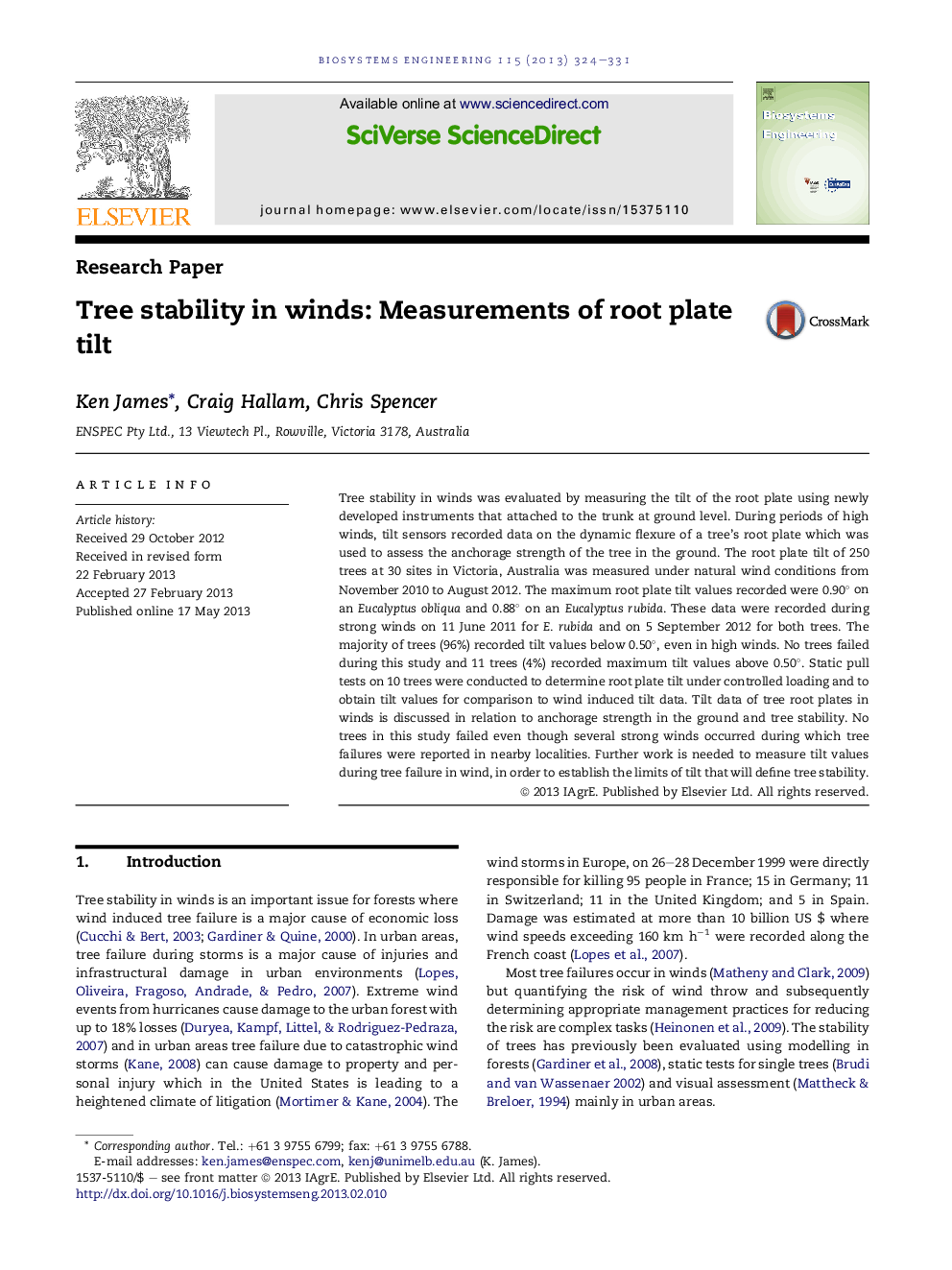| Article ID | Journal | Published Year | Pages | File Type |
|---|---|---|---|---|
| 1711332 | Biosystems Engineering | 2013 | 8 Pages |
Tree stability in winds was evaluated by measuring the tilt of the root plate using newly developed instruments that attached to the trunk at ground level. During periods of high winds, tilt sensors recorded data on the dynamic flexure of a tree's root plate which was used to assess the anchorage strength of the tree in the ground. The root plate tilt of 250 trees at 30 sites in Victoria, Australia was measured under natural wind conditions from November 2010 to August 2012. The maximum root plate tilt values recorded were 0.90° on an Eucalyptus obliqua and 0.88° on an Eucalyptus rubida. These data were recorded during strong winds on 11 June 2011 for E. rubida and on 5 September 2012 for both trees. The majority of trees (96%) recorded tilt values below 0.50°, even in high winds. No trees failed during this study and 11 trees (4%) recorded maximum tilt values above 0.50°. Static pull tests on 10 trees were conducted to determine root plate tilt under controlled loading and to obtain tilt values for comparison to wind induced tilt data. Tilt data of tree root plates in winds is discussed in relation to anchorage strength in the ground and tree stability. No trees in this study failed even though several strong winds occurred during which tree failures were reported in nearby localities. Further work is needed to measure tilt values during tree failure in wind, in order to establish the limits of tilt that will define tree stability.
► Tilt of tree root plates in high winds to assess tree stability. ► Tilt values from trees subject to winds and static load tests. ► Experimental results from trees failing in winds has not yet been reported. ► Static load tests may not represent dynamic wind loading. ► Measuring root plate tilt is a useful method to assess tree stability in winds.
